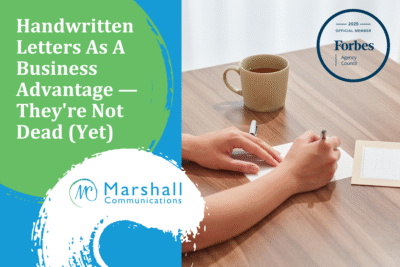Posted on: July 22, 2022
By Nancy Marshall, The PR Maven®

To become successful in business, you have to think beyond hiring employees or hitting sales numbers. You have to build a brand — both in person and online.
As Amazon’s CEO Jeff Bezos puts it, “a brand for a company is like a reputation for a person.” In other words, it means everything. It goes beyond a logo, a tagline or even a name. It’s how people think and feel about you or your organization.
Strengthening your personal brand also enhances your company’s brand. When you think of a company, you often think about the people leading it — the human stories that make the company what it is. Consider Apple: What would it be without the story of Steve Jobs and Steve Wozniak’s world-changing work in a California garage? I believe that much of the Apple brand today has to do with the mystique of their creativity in that garage so many years ago.
So how do you build your brand like Jobs and Wozniak did? According to Virgin Group founder Richard Branson, “branding demands commitment,” namely “striking chords with people to stir their emotions.”
He’s right. The way I look at it, the larger your network becomes and the more people who know of your company, the more powerful your brand will be. Networking is integral to branding because your brand essentially comes down to how many people know, like and trust you. You want them to view you in the most positive light and to think of you first when they need something you have to offer.
The key to building your brand, therefore, is to expand your network. This often requires time and effort on a daily basis to connect with people virtually and in the real world, face-to-face.
You can’t strike chords with people by taking shortcuts. You simply won’t get away with it. People can sniff out someone who isn’t authentic. They can also sniff out someone who shows up the same in person as they do online.
Fortunately, social media has made it easier than ever to build a brand, even without in-person contact. This isn’t to say that such contact no longer matters (it does), but social media platforms have provided us with a viable alternative and supplement to traditional networking. I always tell people that they should seek personal contact to supplement online connections. If you connect with someone online, seek an opportunity to meet in person, and if you know each other in person, connect online to extend the relationship.
To that end, I believe that LinkedIn may be the best place to build your personal brand. Among professionals, there doesn’t seem to be a better option. As reported by Search Engine Journal, LinkedIn has more than 600 million members worldwide, and nearly half of them visit the site daily. More than 60 million of them are senior-level influencers, while 40 million claim to be in decision making positions.
That’s quite the target audience. LinkedIn is filled with highly competent people who are ready to consume your content. Approximately 45% of those who read LinkedIn articles are in upper-level roles. In my experience, such users tend to trust the platform’s adherence to professionalism.
Use this to your advantage. LinkedIn may not prioritize immediate responses like other social media platforms (e.g., Facebook and Twitter), but what it lacks in immediacy, it makes up for in high-level content — and high-level consumers of that content.
If you write articles or link to your press releases on an ongoing basis, that content will accumulate over time to tell your brand story. LinkedIn also allows you to position yourself as an authority in your field — a thought leader who deserves other people’s utmost attention. Whether you’re an expert on public relations or marketing or something else entirely, LinkedIn may be the platform that’s best-suited to differentiating your brand from others.
And, yes, everyone is an expert on something. You just have to find out what that is.
I recently interviewed a LinkedIn coach and personal brand strategist on my podcast, and she emphasized the deep connection between storytelling and branding. As she explains it, her goal is to identify an individual’s “slice-of-life” story and then use LinkedIn to promote that story to the masses.
Whether you’re a CEO for a Fortune 500 company, a professional athlete or a Maine lobsterman, everyone has a story. More importantly, everyone has a story worth telling.
It’s time to tell it on LinkedIn. One way to start is by writing your own summary section that encapsulates what you want your brand to be. The summary section gives you the running room needed to flesh out your brand and highlight the keywords and phrases that a Google search will pick up.
Ask yourself: What differentiates me? What do I want Google to pick up about me?
Your target audience is ready for you on LinkedIn. So start building your network and your brand.
This article originally appeared on the Forbes Agency Council CommunityVoice in September 2019.










